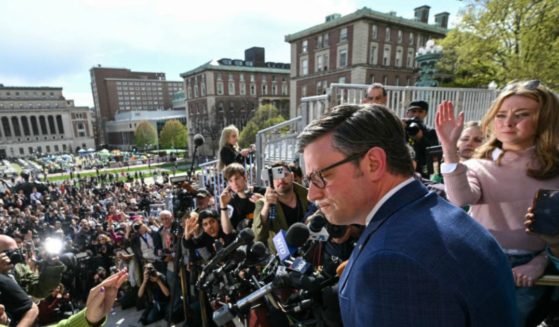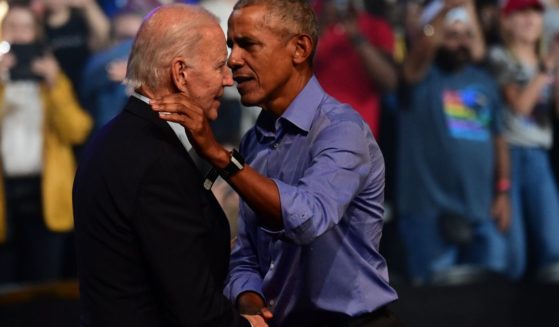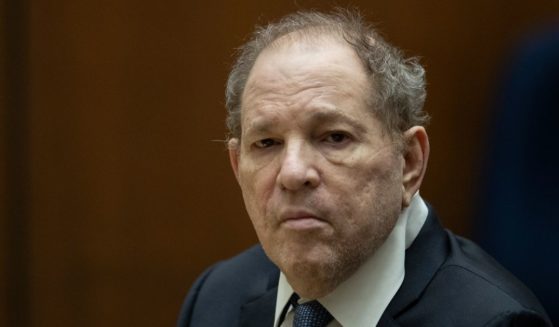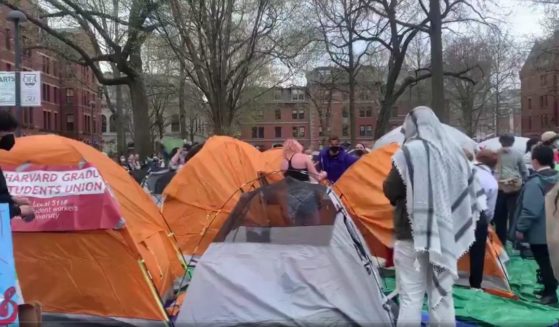Blackface scandal spotlights deeply embedded racism in US
When Virginia Gov. Ralph Northam refused to resign last week, he did so in the shadow of a Capitol built by a founding father and a slave owner, in the former seat of the Confederacy still wrestling with what to do about statues that honor those who fought to preserve slavery.
The 35-year-old photo on his yearbook page of a person in blackface and another person in a Ku Klux Klan robe has brought about a stunning reversal of fortune in Northam’s political career and laid bare for the nation just how deeply racist behavior remains interwoven in American culture, institutions and politics. In rejecting calls to step down, the 59-year-old white son of Virginia came across to many African-Americans as displaying a sense of white privilege.
“What we have learned over the last 24 hours along with all the incidents of the last two years brings front and center the need for this nation to deal with the question of race once and for all,” NAACP President Derrick Johnson said in an interview Saturday. “Because we have (President Donald) Trump in the White House, who has created a political landscape of intolerance and racial hatred, this has exposed a wound that has been festering for a while now.”
The incident came on the first day of Black History Month and as Virginians prepare to mark the 400th anniversary of the arrival of the first enslaved Africans to the settlement of Jamestown.
“I think a lot of black folks are tired of apologies and talking,” said Wes Bellamy, a councilman in Charlottesville, Virginia, who has worked for the removal of Confederate statues in the city. “This is another ugly stain on our state’s history. We are going to have to commit ourselves to making this right — not just with our words, but with our resources.”
Should Northam, a Democrat, ultimately step down, Lt. Gov Justin Fairfax would become the second black governor in the South since Reconstruction. Last month, Fairfax, the only black official currently elected statewide, sat down in protest as the Virginia Senate recognized Lee-Jackson Day, which honors Confederate generals Robert E. Lee and Stonewall Jackson.
Virginia is still healing from the racial wounds inflicted in August 2017, when white supremacists marched on Charlottesville to protest the removal of a statue of Lee. Many of the mostly white men who converged on the city chanting racist slogans and burning torches were about the same age that Northam would’ve been as a student at Eastern Virginia Medical School.
Northam’s age belies the assumption that their actions reflected the tenor and tone of the era. In 1984 when the photograph was included in Northam’s yearbook page, civil rights activist Jesse Jackson was running for president. Pioneering black entertainer Bill Cosby was the star of one of America’s most popular television shows. African-Americans were climbing the nation’s social, professional, political and economic ladders at unprecedented speed.
In his initial apology, Northam said that the photo does not represent who he is now. A day later, he denied being in the photograph at all, while admitting to wearing blackface to imitate Michael Jackson at a dance contest.
The incident is the third in recent weeks: Last month, Florida’s secretary of state resigned after photos from a 2005 Halloween party showed him in blackface dressed as a Hurricane Katrina victim. Also last month, videos surfaced of people in blackface at the University of Oklahoma, including a man walking near campus. Two students withdrew from the university and apologized.
Such incidents are not only hurtful; they can be harmful when they happen at institutions of higher learning and are perpetrated by people who go on to impact the lives of people of color as decision-makers — from politicians to doctors. A recent University of Virginia study showed that black Americans are systematically undertreated for pain relative to white patients, and that white laypeople and medical students and residents hold false beliefs about the biological differences between the races — beliefs that can affect the perception and treatment of black patients.
The trust Northam, a pediatric neurologist, established with his patients was not unlike the faith he sought from voters. In running for governor, many people — including the 87 percent of black voters who supported him — saw Northam as a candidate who belongs to a party associated with justice and equality, who ran against an opponent tied to a president who has been accused of racism.
Their vote for Northam was, in part, a rejection of those views and beliefs. The governor’s defiance amid the roar for him to step aside among even his Democratic colleagues, black and white, casts doubt on Northam’s ability to represent these voters going forward, said NAACP President Johnson.
“If we cannot recognize African-Americans are full citizens entitled to humane treatment by our public policy makers, how can we expect public policy to meet the needs and interests of those communities being portrayed as less than human?” Johnson asked.
It also raises a critical question: In politics, should sincerity and repentance for a racist past matter more than the hurt feelings of Americans who live on the receiving end of racism?
Northam’s lieutenant governor doesn’t think so.
“I have worked closely with Ralph Northam over many years. He has been a friend to me and has treated my family and me with hospitality and respect,” Fairfax wrote in a statement Saturday, noting that he is a descendant of people enslaved in Virginia. “While his career has been marked by service to children, soldiers and constituents, I cannot condone the actions from his past that, at the very least, suggest a comfort with Virginia’s darker history of white supremacy, racial stereotyping, and intimidation.”
Fairfax has not called for Northam’s resignation, but by Sunday, he was one of the few Democrats who had spoken publicly and not called for him to step down.
Northam “doesn’t want to go down on something he doesn’t think he did,” said Anthea Butler, a University of Pennsylvania religion professor who has written about politics. “I don’t know how he thinks he can show up in the black community. He’s hobbling what he can do for his African-American constituents, and we’re asked to do the labor of forgiveness and healing. We’re over it. Why should he be allowed to stay?”
His stance illustrates how many Americans have come to view racism since the end of legally-enforced segregation, defined by only the most egregious, blatant examples like using the N-word or the Ku Klux Klan.
“That’s the boundary. Everything else is not,” said Carol Anderson, Emory University African American studies professor and author of ‘White Rage: The Unspoken Truth of Our Racial Divide.’
“Unless you’re burning a cross, you’re not racist,” Anderson said. “But racism since the Civil Rights Movement is deceptively structural.”
___
Whack is The Associated Press’ national writer on race and ethnicity. Follow her work on Twitter at http://www.twitter.com/emarvelous.
The Western Journal has not reviewed this Associated Press story prior to publication. Therefore, it may contain editorial bias or may in some other way not meet our normal editorial standards. It is provided to our readers as a service from The Western Journal.
Truth and Accuracy
We are committed to truth and accuracy in all of our journalism. Read our editorial standards.












